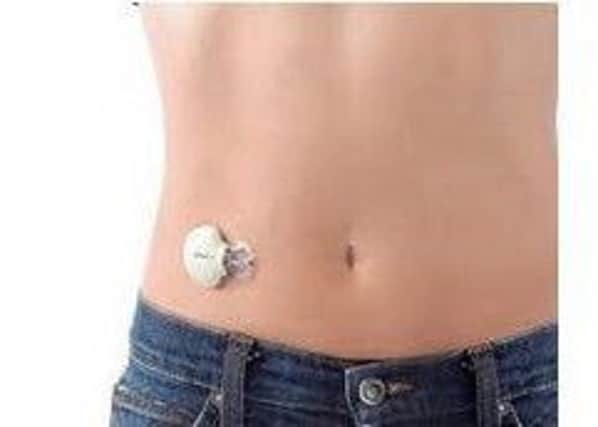New look diabetes monitor pilot in Western Isles


This is a well established method of controlling the condition and helps people to reduce the number of hypoglycaemic episodes, which means that their
blood sugar is so low that they require some form of medical assistance.
Advertisement
Hide AdAdvertisement
Hide AdThe reduction in these episodes means that the long term risks associated with Type 1 diabetes such as, kidney, heart and eye problems are also reduced.
The insulin pump, a battery-operated device which can be used as an alternative to injecting insulin into the body with a pen, helps patients improve
their diabetes control and gives them more flexibility.
However, advances in technology are now allowing people with Type 1 diabetes to self manage their condition in a whole new way through their existing
insulin pump.
As part of a joint collaboration involving the NHS Western Isles Diabetes, TEC (Technology Enabled Care) and eHealth teams, an exciting pilot programme
has been running for the last six months.
Advertisement
Hide AdAdvertisement
Hide AdThis programme combines wireless sensor technology with insulin pumps to facilitate Continuous Glocuse Monitoring (or CGM) to take place.
The combination of these technologies is known as ‘sensor augmented insulin pump therapy’. Now, for the first time, a group of service users who
already have an insulin pump have been given access to this treatment in the Western Isles- making this programme the only one of its kind in Scotland.
How does it work?
Continuous Glucose Monitoring uses a small discreet sensor that is attached to the skin with a tiny hair-like wire that measures the levels of sugar in
Advertisement
Hide AdAdvertisement
Hide Adthe fluid beneath the skin. For some people with a compatible insulin pump the sensor can be linked via Bluetooth to the pump.
This allows constant second-by-second monitoring of the person’s blood glucose level, which means that the person knows exactly what their blood
glucose is doing at any time, without the need to prick their finger for blood in the traditional way.
The really clever bit is that the pump will automatically suspend insulin delivery or stop the pump completely if the sensor detects that the blood
Advertisement
Hide AdAdvertisement
Hide Adsugar reading is in a ‘danger zone’. These danger zones can result in the person feeling very unwell and can lead to a hospital admission.
After the results have been recorded, the service user can upload the data in their own home.
These results can then be viewed on line by the Diabetes Specialist Nurse and any required changes to the insulin pump settings can be made remotely
by the user.
Jane MacAulay, NHS Western Isles Diabetic Centre Lead Nurse, said: “The results so far have been extremely positive for both our patients and the
Advertisement
Hide AdAdvertisement
Hide AdDiabetes service, with an evaluation report expected to be available in September.
“Furthermore, to promote how this new technology has helped some of our existing patients manage their diabetes, we have created a short film.
The film explores the lives of two local people living with Type 1 diabetes and is available to view via our NHS Western Isles Vimeo page
at: